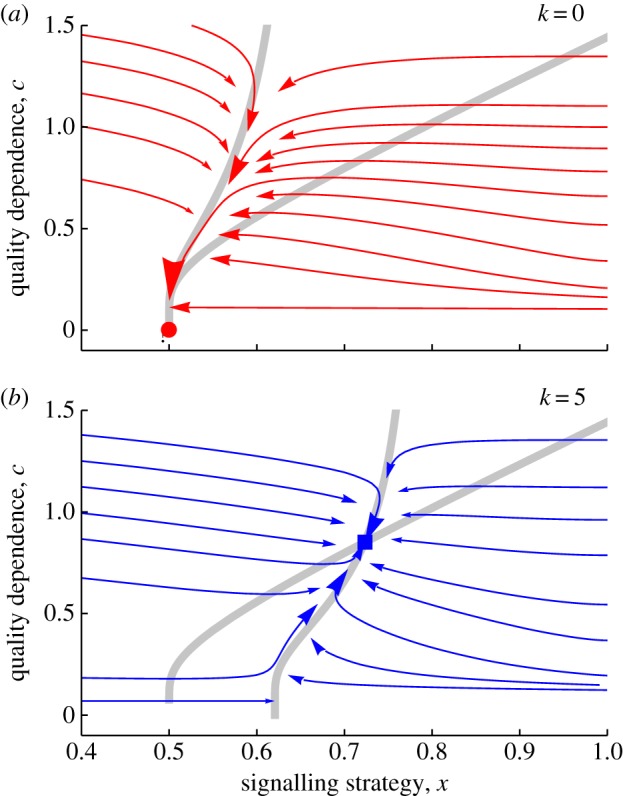Figure 2.

Index signals can evolve by a mechanism of costly signalling theory. Plots illustrate the joint evolutionary dynamics of a signalling strategy x, which sets the maximum signal size, and quality dependence c, which limits the signal size of low-quality individuals. In this example with individuals in either low or high quality (q = 0 or 1), each with probability 1/2, the arrows show the local direction of natural selection at a given trait combination (grey lines are null clines, and selection gradients are multiplied by rate constants vx = 1 and vc = 5; see electronic supplementary material). In (a), where a given signal size is equally costly for individuals of either quality (k = 0), quality dependence is disfavoured and honest signalling breaks down. In (b), where a given signal size is differentially costly for low-quality individuals (k = 5), quality dependence is favoured and honest signalling is therefore enforced. Realized signal sizes at the joint ESS x*, c* (filled symbols) are shown in figure 1.
